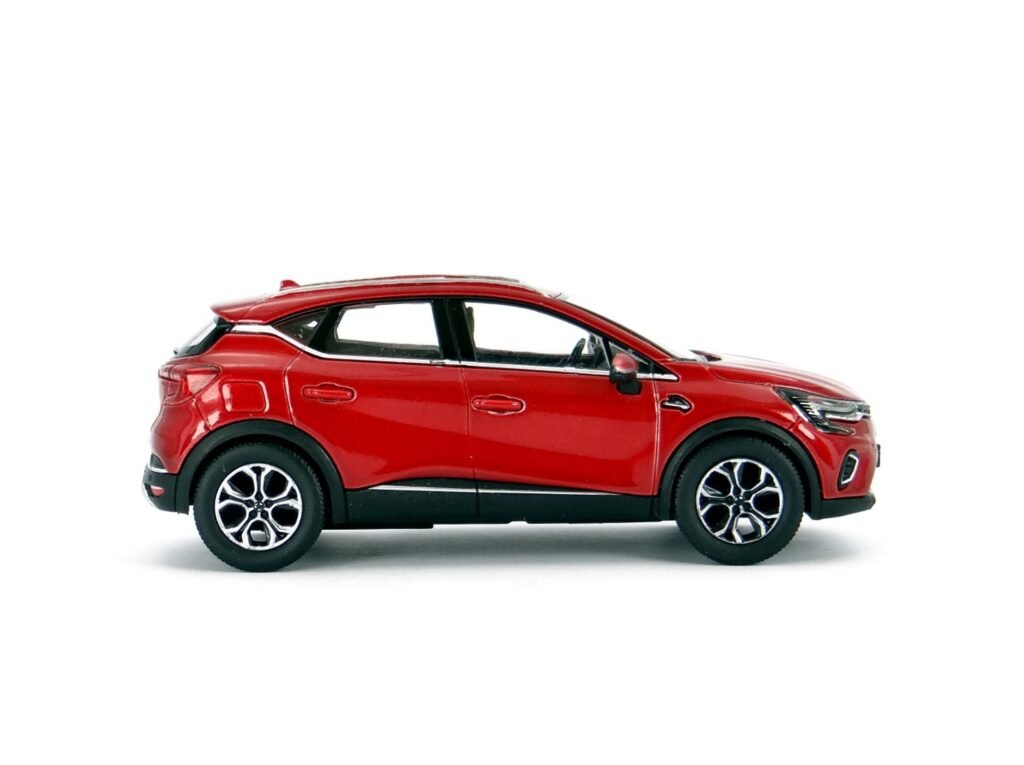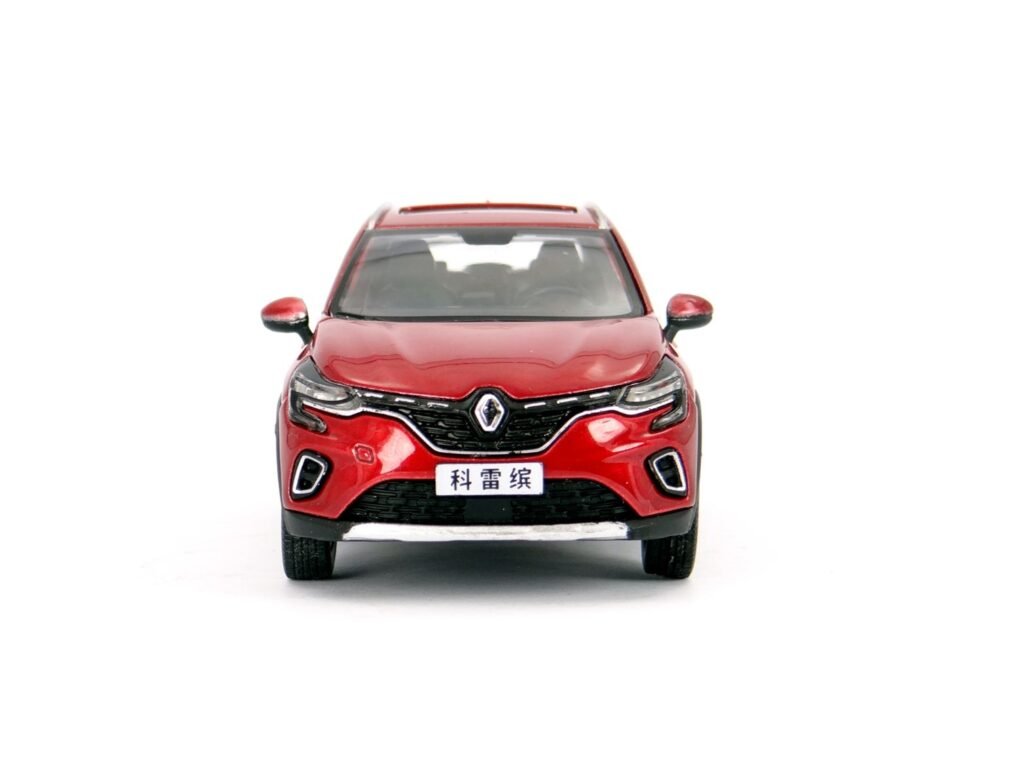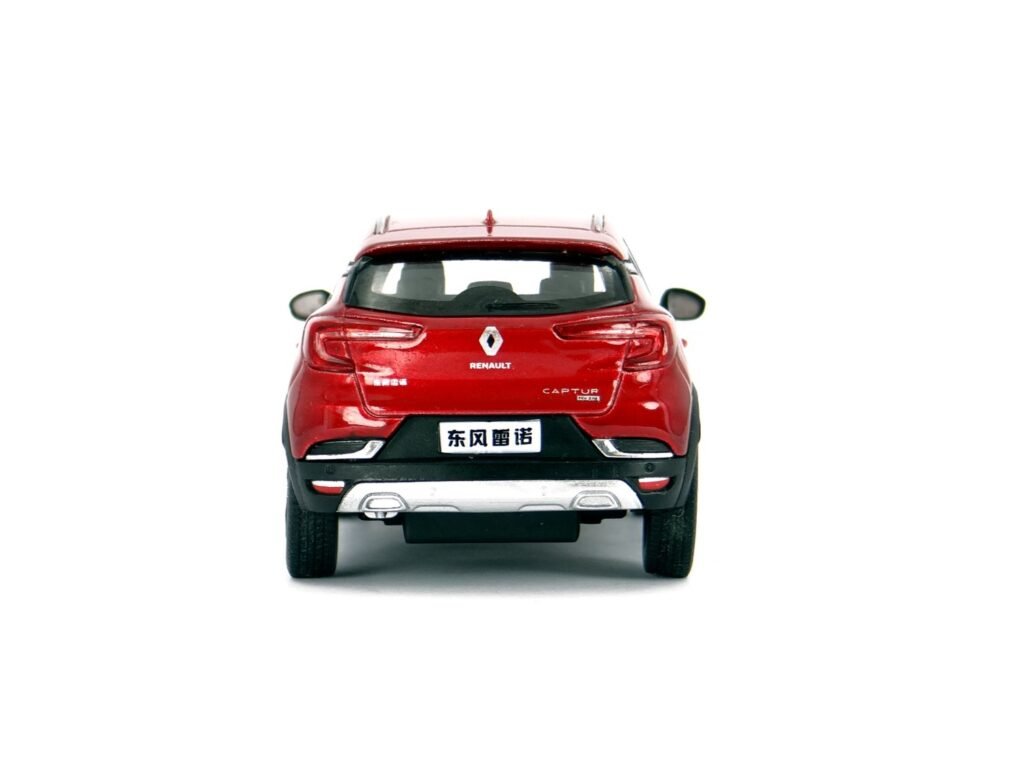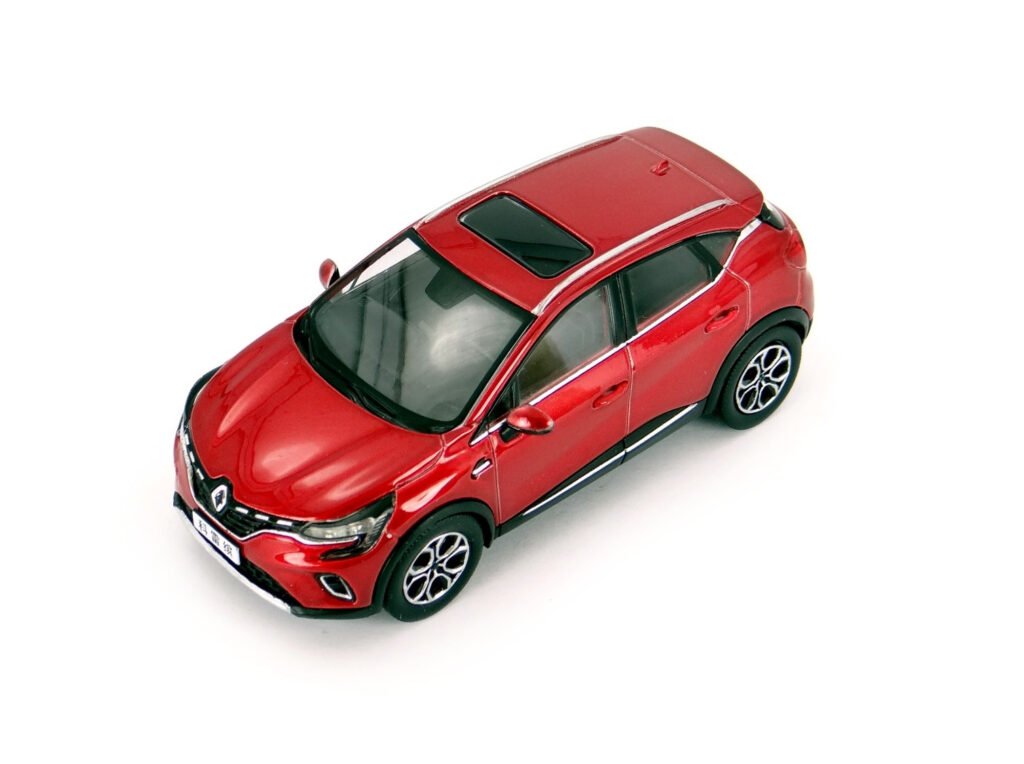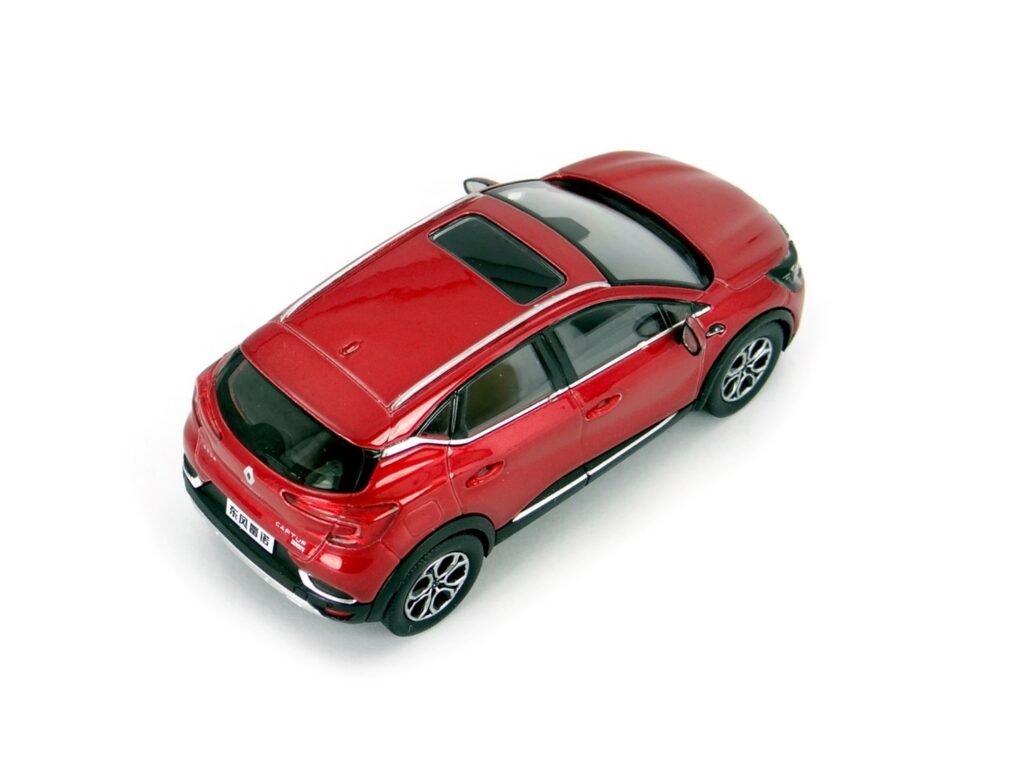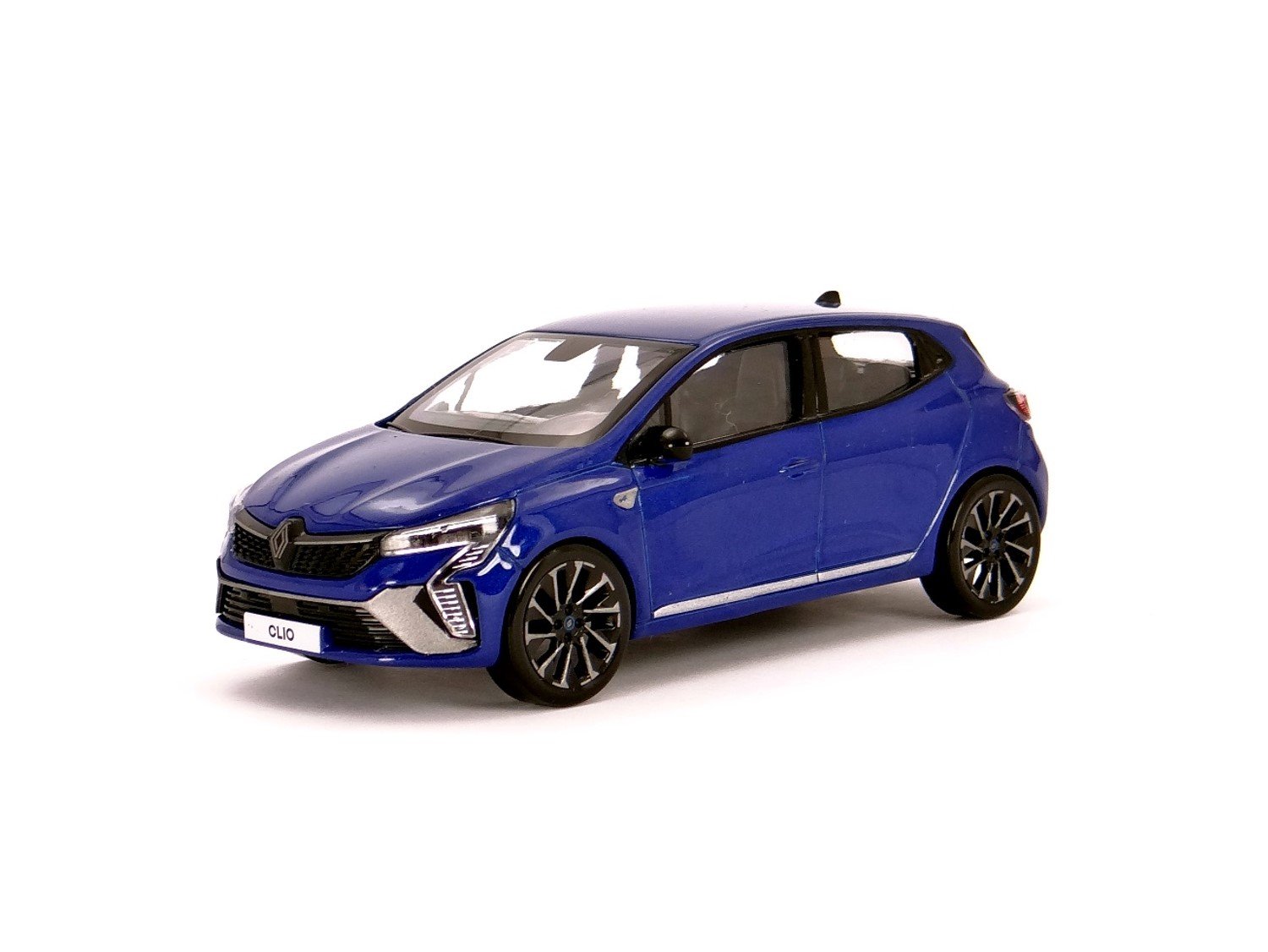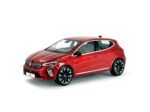Captur to najlepiej sprzedający się model w obecnej gamie Renault. Nie ma tutaj miejsca na zbędne ryzyko. Dlatego też, Renault Captur drugiej generacji to po prostu sensowny, dobrze przemyślany mały SUV.
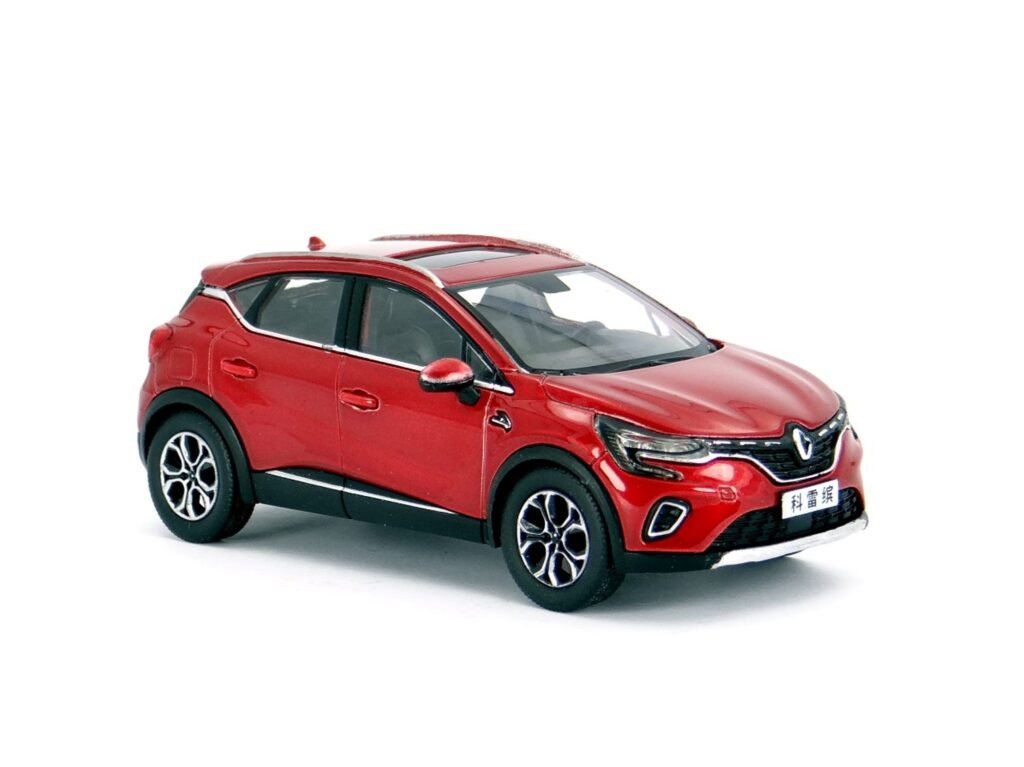
Kiedy pierwszy Captur pojawił się na rynku, w swojej klasie miał tylko kilku rywali. Z biegiem lat ich liczba szybko się powiększyła, więc kiedy w 2019 roku debiutowała druga generacja modelu, musiała już stawiać czoła całej armii małych SUV-ów. Aby mały muszkieter pozostał w grze, Francuzi naprawdę musieli przyłożyć się do pracy.
Tak jak poprzednika, nowy model zbudowano na platformie Clio. W tym przypadku to nowa platforma CMF-B, wykorzystana najpierw w Clio V. Pozwala ona na montowanie napędów hybrydowych, których brakowało poprzednikowi, polepszenie własności jezdnych oraz na powiększenie wymiarów. Captur II jest dłuższy o 105 mm (4227 mm), szerszy o 19 mm (1797 mm) i wyższy o 20 mm (1576 mm) od poprzedniej generacji. Ma również o 33 mm większy rozstaw osi (2639 mm).
Wygląd Captura czerpie ze stylistyki Clio V jak również innych modeli Renault. Projektowi daleko do odwagi, ale dzięki temu może spodobać się szerszej rzeszy odbiorców. Captur jest po prostu świeży i nowoczesny. Renault zapowiedziało aż 90 różnych konfiguracji kolorystycznych, więc każdy znajdzie coś dla siebie.
W środku druga generacja Captura jest bardzo podobna do Clio V. To zdecydowanie dobra informacja, bo oznacza elegancką deskę rozdzielczą i znacznie lepszą jakość niż w poprzedniku. Z poprzednika przeniesiono natomiast przesuwaną tylną kanapę i schowek przed pasażerem w formie szuflady. W niektórych wersjach przewidziano kolorowe wstawki, co rozwesela wnętrze.
Od początku w ofercie Captura znalazły się turbodoładowane silniki benzynowe 1.0 TCe (100 KM) i 1.3 TCe (130 i 155 KM) oraz diesel 1.5 Blue dCi (95 i 115 KM). W 2020 roku dołączył odmiany hybrydowe E-Tech Hybrid oraz E-Tech Hybrid Plug-In korzystające z wolnossącego benzynowego silnika 1.6 i motorów elektrycznych. Łączna moc wersji E-Tech Hybrid wynosi 140 KM a odmiany Plug-In 160 KM.
Na bazie Renault Captur od 2022 roku produkowana jest również druga generacja Mitsubishi ASX. To typowy przykład tzw. “badge-engineering”, gdyż poza logotypami, oba samochody praktycznie w ogóle się nie różnią.

O miniaturze – Renault Captur 2019
Przedstawiam Wam metalowy model diecast Renault Captur 2019. Autko, podobnie jak niedawno prezentowana Corolla, to chiński model promocyjny, co oznacza, że nie wiadomo jaka firma go wykonała. A przynajmniej, mnie nie udało się znaleźć takiej informacji.
Na miniaturkę trafiłem przypadkiem kilka lat temu, ale dopiero teraz zebrałem się aby ją pokazać na blogu. Jeśli chodzi o miniaturki Captura drugiej generacji, to oczywiście na myśl przychodzą najpierw produkty Noreva. Niestety, są to modele o wykończeniu budżetowym, więc cierpią na mankamenty o których wiele razy pisałem (n.p. odlane boczne lusterka, plastikowe koła). Na ich tle, chiński Captur jawi się jako produkt z wyższej półki.
Pierwsze zaskoczenie to sposób przytwierdzenia do podstawki. Nie ma tu śruby, w zamian jest małe pokrętło które trzbea przekręcić by modelik uwolnić. Największym zaskoczeniem jest jednak fakt, że autko posiada…napęd tylnych kół! Wystarczy wycofać autko po podłożu i puścić a ono wsytrzeliwuje do przodu! Jest to coś widzianego głównie w zabawkach, aniżeli “prawdziwych” modelach. Jednak, nawet z modelarskiego punktu widzenia, Captur jest bardzo pożądny. Łatwo pokonuje Noreva pod względem detali.
Pomimo wielu mocnych stron, dostrzegłem w modeliku kilka wad. Główna to dość niechlujne malowanie. Najbardziej widać to na bocznych lusterkach, ale koła i relingi dachowe również trochę cierpią z tego powodu. Drugą rzucają się w oczy rzeczą jest tylne logo zrobione w kalkokmanii. Wygląda trochę nienaturalnie i zabawkowo. Szkoda, że producent nie zdecydował się na chromowane tylne logo.
Ogółem, ten chiński model diecast Renault Captura to bardzo ciekawe znalezisko. Pomimo, że ma trochę cech zabawki, wygląda na pełnoprawną kolekcjonerską miniaturkę.
Na koniec, polecam odwiedzenie profile MiniAutomobili na Instagramie i Facebooku!
*** ENGLISH ***
The Captur is the best-selling model in Renault’s current line-up. There is no room for unnecessary risk-taking here. Hence, the second-generation Renault Captur is simply a sensible, well thought-through small SUV.
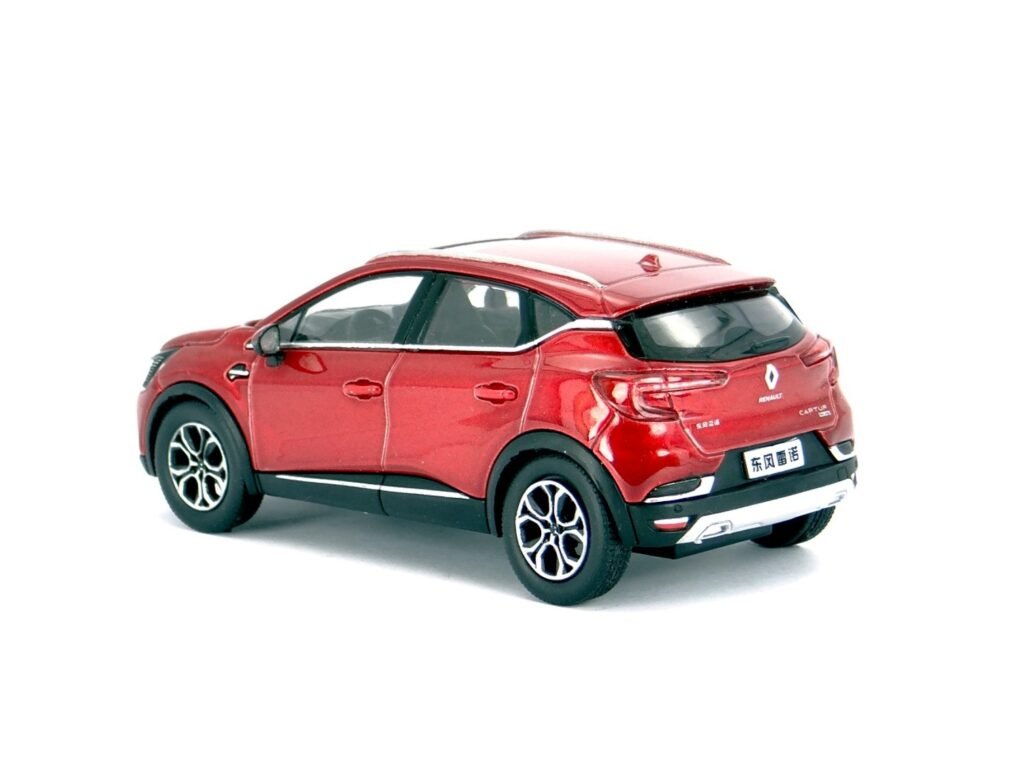
When the original Captur appeared on the market, it only had a few rivals in its class. With time, their number quickly multiplied, so when the second generation arrived in 2019, it had to face a whole army of small SUVs. Therefore for the small musketeer to stay in the game, the French had to really put the work in.
Just like its predecessor, the new model is built on the Clio platform. In this instance it’s the new CMF-B platform, first used on the mk5 Clio. It allows for fitting of hybrid powertrains, which were missing from the predecessor, better handling and also increase in size. Compared to the previous model, the mk2 Captur is 105mm longer (4,227 mm), 19mm wider (1,797 mm) and 20 mm taller (1,576 mm). It also has a wheelbase longer by 33 mm (2,639 mm).
The Captur’s looks borrow from the design of the mk5 Clio, as well as other Renault models. The design is far from daring, but that helps it to have a wider appeal. The Captur is simply fresh and modern. Renault announced as much as 90 different colour configurations, so there is something for everyone!
Inside, the second-generation Captur is very similar to the mk5 Clio. That’s certainly good news, because it means an elegant dashboard and much better quality than its predecessor. What was carried over from the predecessor however, is the sliding rear bench and a drawer instead of a glovebox (although unavailable in RHD). In some specs there are coloured inserts available, which makes the interior more fun.
From the beginning, the Captur’s line-up consisted of turbocharged petrol engines 1.0 TCe (100 hp) and 1.3 TCe (130 and 155 hp) as well as a diesel 1.5 Blue dCi (95 and 115 hp). In 2020 the E-Tech Hybrid and E-Tech Hybrid Plug-In models joined the range, both using a naturally-aspirated 1.6 petrol unit and electric motors. The total power output for the E-Tech Hybrid is 140 hp, while for the E-Tech Hybrid Plug-In it is 160 KM.
Based on the Renault Captur is also the second-generation Mitsubishi ASX, produced since 2022. This is a prime example of “badge-engineering”, as apart from logos, both cars are almost identical.
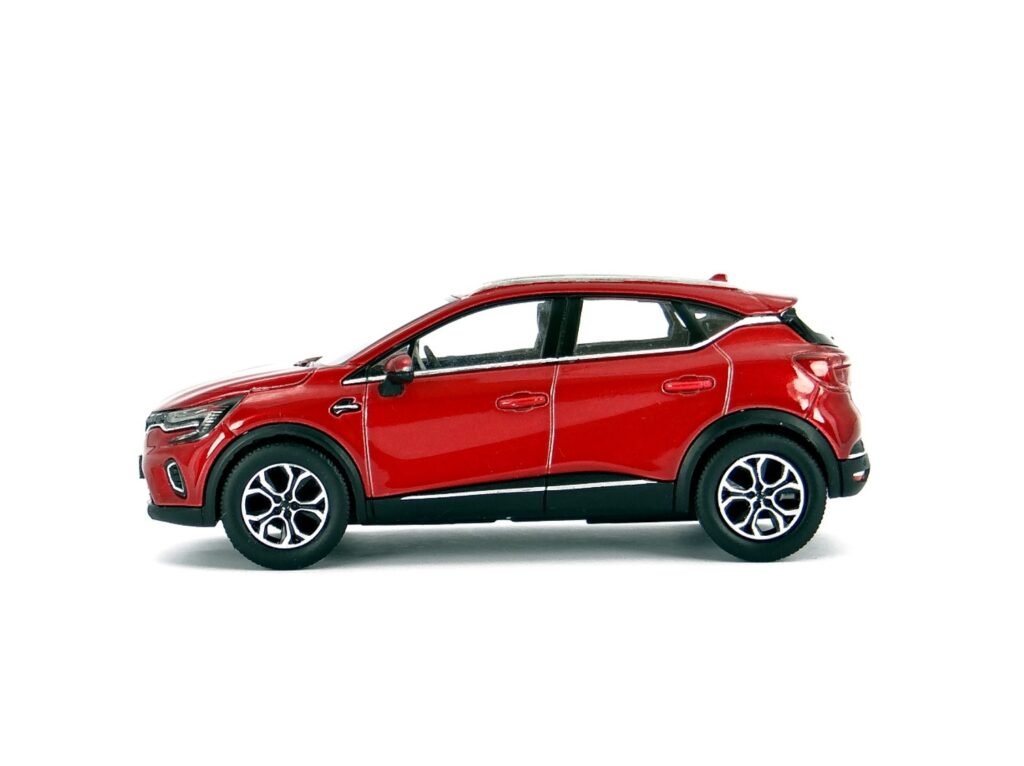
About the miniature – Renault Captur 2019
I present you a metal diecast model of the 2019 Renault Captur. The car, similarly to the Corolla I recently shown, is a Chinese promo model, which means that its manufacturer is unknown. Or at least, I wasn’t able to find such information.
I came across this miniature accidentally a few years ago, but I only just got round to showing it on my blog now. In terms of miniatures of the second-generation Captur, Norev products spring to mind first of course. Unfortunately, they’re budget-finish models, hence they suffer all the flaws I have repeatedly mentioned (e.g. cast wing mirrors, plastic wheels). In comparison, the Chinese Captur seems like an upmarket product.
The first surprise is how the model is attached to the plinth. There are no screws, instead there is a small knob that you turn to release the model. However, the biggest surprise in the model was certainly the friction motor at the rear! You pull the car back, let go and it shoots forward! That is something you tend to see in toys, not “proper” model cars. However, even from a car modelling perspective, the Captur is very decent! It easily trumps Norev on detail.
Despite many strengths, I did notice a few flaws in the model. The main one is a rather haphazard paintwork. It’s mostly visible on the wing mirrors, but wheels are roof rails also suffer from it a little. The second thing that catches your eye is the decal of the rear logo. It looks somewhat unnatural and toy-like. It’s a shame that the manufacturer didn’t go for a chrome-finish on the rear logo.
Overall, this Chinese diecast model of the 2019 Renault Captur is a very interesting find! Despite it having some toy-like, features it looks like a credible collector’s miniature.
Lastly, I recommend visiting MiniAutomobile’s profiles on Instagram and Facebook!





